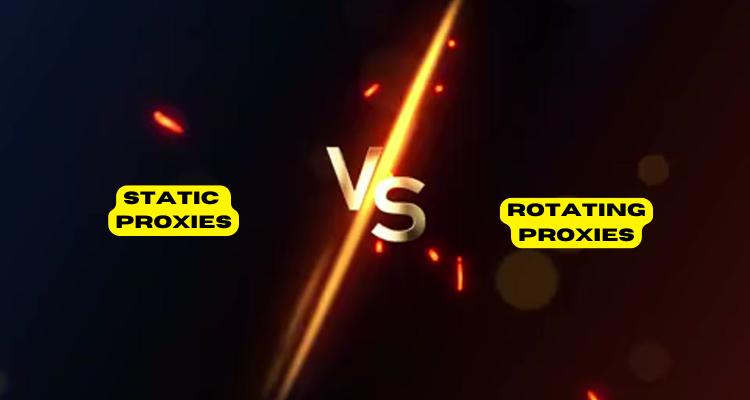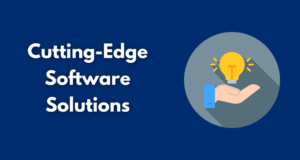The rapid expansion of artificial intelligence is reshaping how digital infrastructure operates, forcing platforms to adapt their security and content delivery. McKinsey reports that demand for AI-ready data centers will grow by 33% annually through 2030, with up to 70% of total capacity dedicated to AI workloads.
As websites respond with more dynamic content layers, stricter verification processes, and adaptive anti-bot systems, choosing the right proxy type, static or rotating, becomes essential for maintaining speed, reliability, and uninterrupted access in increasingly guarded online environments.
Table of Contents
ToggleWhat Are Static Proxies?
A static proxy assigns you a single, fixed exit IP address that stays the same for the duration of your session or subscription. It does not change between requests unless you manually switch it or ask your provider to issue a new IP.
Key characteristics:
- IP Persistence: Ideal for accounts that require repeated logins from the same address.
- Speed: Generally faster than rotating proxies since routing remains constant.
- Compatibility: Works well with IP whitelisting and services needing identity consistency.
Common use cases:
- Accessing accounts tied to a fixed IP: Maintain consistent authentication for services requiring the same IP address.
- Secure remote access to company resources: Ensure safe, authorized connections to internal systems and networks.
- API integrations with strict IP rules: Comply with APIs that only allow requests from approved IP addresses.
Static proxies are best suited for scenarios where stability, speed, and consistent identity are more important than anonymity or IP diversity.
What Are Rotating Proxies?
A rotating proxy automatically switches your exit IP, either per request or at set intervals, by drawing from a large pool of residential, mobile, or datacenter addresses. When continuity is needed, optional sticky sessions can keep one IP for a short window.
Key characteristics:
- Dynamic IP Assignment: Reduces detection risk by mimicking organic traffic.
- High Anonymity: Makes it harder for websites to link multiple requests.
- Geo-Flexibility: Access to IPs from multiple locations for regional targeting.
Common use cases:
- Large-scale web scraping: Gather high volumes of data without triggering IP bans or rate limits.
- Ad verification and fraud detection: Check ads across locations and detect malicious activity without revealing your real IP.
- SEO rank tracking across regions: Monitor keyword rankings from multiple geographic locations accurately.
- Managing multiple social media accounts: Operate several profiles safely without linking them through a shared IP address.
Rotating proxies are ideal for tasks that require high anonymity, broad geo-coverage, and uninterrupted access at scale.
When to Use Static Proxies?
Static proxies are best used when you need consistent account logins without triggering security alerts, access to platforms or APIs with strict IP whitelisting requirements, and faster, low-latency performance for time-sensitive tasks such as live monitoring, trading, or real-time data processing.
Account Login Consistency
Platforms that monitor login IP history may flag unusual or frequent changes as suspicious activity. By keeping a single, consistent IP, static proxies help maintain a “trusted” profile and reduce the risk of triggering additional verification steps or account locks.
IP Whitelisting Requirements
Certain APIs, admin dashboards, or secure platforms only allow access from pre-approved IP addresses. Static proxies meet these requirements by providing a fixed IP, ensuring uninterrupted connectivity without the need for repeated reauthorization.
Lower Latency Tasks
Because static proxies do not constantly reroute traffic through different IPs, they generally offer slightly better speeds and lower latency. This makes them well-suited for time-sensitive operations such as live monitoring, trading, or real-time data processing.
When to Use Rotating Proxies?
Rotating proxies are useful for high-volume scraping to avoid IP bans, accessing geo-restricted content for localized insights, verifying ads from different regions to detect fraud, and reducing repetitive CAPTCHA challenges for smoother data collection.
- High-Volume Scraping: Distribute requests over many IPs to prevent rate limits and IP bans.
- Geo-Restricted Data Access: Instantly switch IP locations to access localized content or market insights.
- Ad Verification Across Regions: Test ad placements from different geolocations to detect fraud or mismatches.
- Avoiding CAPTCHAs: Change IPs frequently to reduce repetitive CAPTCHA triggers.
Using rotating proxies helps maintain stable, reliable access across platforms, improve the accuracy of geo-targeted requests, and minimize interruptions from rate limits, CAPTCHAs, or regional restrictions, ensuring smoother, more consistent data collection workflows.
How Do Static and Rotating Proxies Compare in Performance?

When choosing between static and rotating proxies, it’s important to understand how they differ in speed, anonymity, and reliability. The table below summarizes the key performance distinctions to help select the right proxy type for your workflow.
| Performance Comparison | Static Proxies | Rotating Proxies |
| Speed | Often faster due to stable, direct routing. | Slightly slower as IP switching can add milliseconds. |
| Anonymity | Easier to fingerprint, less stealthy. | High anonymity and harder to detect. |
| Reliability | Consistent for trusted, fixed-IP workflows. | Good for avoiding long-term blocking, but may disrupt some sessions. |
What Security and Compliance Considerations Apply to Proxies?
Security and compliance considerations for proxies involve following local laws to avoid legal issues, adhering to website terms of service to prevent account bans, respecting ethical guidelines such as robots.txt to protect privacy, and choosing reliable providers with verified IP pools for safe and stable operations.
Jurisdictional Restrictions
Different countries have varying laws regarding automated data collection and proxy usage. Checking local regulations before deploying proxies helps prevent legal issues, fines, or service interruptions and ensures that your data collection practices remain compliant.
Terms of Service
Always review the terms of service of the websites you interact with. Following these rules helps avoid account suspensions or bans, maintains access to necessary resources, and ensures that your operations remain aligned with platform policies.
Ethical Practices
Respect ethical guidelines by adhering to robots.txt and avoiding the collection of sensitive personal or confidential information without consent. This approach protects privacy, reduces the risk of legal action, and maintains trustworthiness in data operations.
Provider Quality
Selecting high-quality proxy providers with verified and reliable IP pools ensures stable connectivity and consistent performance. Trusted vendors reduce the risk of compromised or blacklisted IPs, which can interrupt operations or trigger security flags during automated tasks.
What Are The Risks And Limitations Of Using Proxies?
The main risks and limitations of using proxies include slightly slower speeds and added latency for rotating proxies, higher costs for premium rotating IP pools, and the need to monitor both static and rotating IPs to prevent blacklisting or compromised addresses.
- Speed & Latency: Rotating proxies can be slower because traffic is rerouted through multiple IPs, adding small delays.
- Cost: Premium rotating proxy pools are generally more expensive than static IPs.
- IP Quality Management: Both proxy types need monitoring to avoid blacklisted or compromised IPs that can disrupt workflows.
Can Rotating Proxies Bypass All Restrictions?
Rotating proxies cannot bypass all restrictions alone. They work best when combined with request throttling, human-like browsing patterns, and additional tools like CAPTCHA solvers or browser fingerprinting to reduce detection, maintain access, and ensure smoother automated operations.
Effectiveness
Proxies are most effective when used alongside request throttling and human-like browsing patterns, as this approach reduces the risk of detection and improves success rates for high-volume operations, including web scraping, data collection, and automated monitoring.
Additional Tools
For websites with strict anti-bot measures, combining proxies with additional tools such as CAPTCHA solvers, browser fingerprinting, or headless browsing setups can help maintain uninterrupted access, ensure consistent performance, and minimize the chances of IP blocking or account suspension.
How Do You Choose Between Static and Rotating Proxies?
When deciding between static and rotating proxies, consider your specific needs, workflow requirements, and the type of tasks you plan to perform. Ask:
- Do you need speed and IP consistency? → Static.
- Do you need stealth and large-scale access? → Rotating.
- Do you require geo-target flexibility? → Rotating.
- Do you face strict whitelisting rules? → Static.
Ultimately, the right choice depends on balancing performance, anonymity, and geographic flexibility to match your data collection goals.
Static vs. Rotating Proxies: Comparative Overview
To help make an informed choice, the following table provides a side-by-side comparison of static and rotating proxies across key performance, usage, and cost factors.
| Criteria | Static Proxies | Rotating Proxies |
| IP Persistence | Fixed IP for the session or long-term use | IP changes per request or at set intervals |
| Best For | Account logins, whitelisted access, long sessions | High-volume scraping, ad verification, and bypassing geo-blocks |
| Speed & Latency | Typically faster due to fewer routing hops | Slightly slower due to IP switching |
| Detection Resistance | Easier to detect over time if used heavily | Harder to detect due to constantly changing IPs |
| Cost | Usually cheaper per IP | Often higher cost due to large, diverse IP pools |
| Session Management | Persistent by default | Requires sticky session setup for multi-step processes |
| Geo-Targeting | Limited unless multiple IPs are purchased | Extensive with global IP pools |
What Common Mistakes Should You Avoid?
Common mistakes to avoid include choosing a proxy type that does not fit your workflow, rotating IPs too frequently, ignoring bandwidth limits, using IPs from incorrect locations, and skipping sticky sessions, all of which can disrupt operations or reduce efficiency.
Choosing the Wrong Proxy Type
Using a proxy type that does not align with your specific workflow can lead to errors, reduced efficiency, or even blocked access. For example, fixed IPs are better for login consistency, while rotating proxies excel at large-scale data collection, so matching the proxy to your needs is crucial.
Over-Rotating IPs
Switching IP addresses too frequently can be counterproductive, as it may trigger security systems, disrupt sessions, or raise suspicion. Balancing rotation speed with the target site’s tolerance ensures smoother and more reliable operations.
Ignoring Bandwidth Limits
Failing to monitor bandwidth usage can result in unexpected costs, throttling, or service interruptions. Tracking consumption helps maintain uninterrupted workflows during high-volume scraping, monitoring, or automated data collection.
Not Checking Geo Accuracy
Using IPs from incorrect locations can block access to geo-restricted content or produce inaccurate results. Always verify the geographic location of your proxies to ensure precise targeting for marketing, SEO, or research purposes.
Skipping Sticky Sessions
For multi-step processes, neglecting sticky sessions can cause session drops, failed transactions, or inconsistent data collection. Configuring sticky IPs when required preserves session continuity and reduces the risk of operational errors.
Conclusion
Static proxies offer stable, consistent IPs suited for tasks where speed, reliability, and whitelisting compliance are priorities, while rotating proxies excel in high-anonymity, geo-flexible workflows like large-scale scraping or ad verification.
Choosing between them depends on whether your operations require a fixed identity and low latency or diverse IP rotation to avoid detection and access geo-restricted content.
By aligning proxy type with specific performance, security, and compliance needs, you can ensure optimal efficiency, accuracy, and operational stability.









